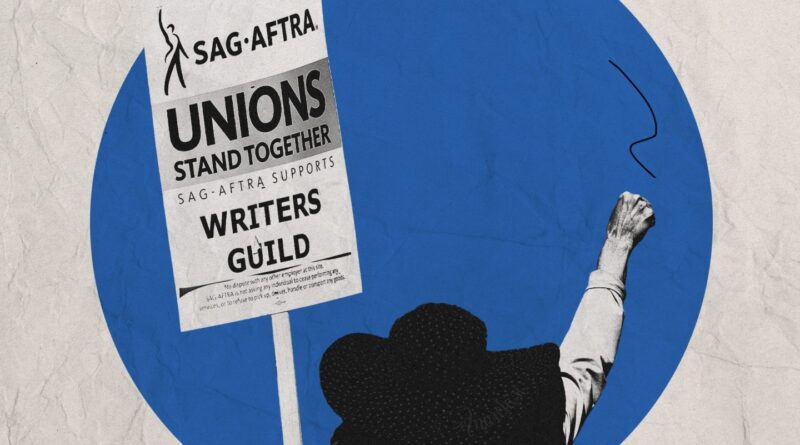Trump Movie Tariffs Are Wedge Issue Between Studio Chiefs, Workers
It’s unclear how it would work. No one knows what it would cost. And it’s anyone’s guess whether it will ever actually happen. But in the days since Donald Trump floated the seemingly crazy idea of slapping tariffs on foreign-made film and TV productions, something unexpected has started to happen in Hollywood: befuddlement has turned into murmurs of approval — at least in certain corners of the industry.
“This is the first time I’ve ever seen this kind of divide,” says Diego Mariscal, an IATSE member who runs Crew Stories, a popular online forum for below-the-line workers. “People I’m talking with are saying, ‘At least Trump’s doing something. When’s the last time a president even tried?’ He’s creating a conversation.”
That conversation, like so many sparked by Trump, is sorting itself along sharply drawn class lines. While the executive class is almost universally opposed to the proposed tariffs — calling them impractical, bad for business, and politically unserious — the crews they employ are, at the very least, intrigued. Some are outright cheering.
“These gigantic corporations line their pockets by recklessly cutting corners, abandoning American crews and exploiting tax loopholes abroad,” read a fiery joint statement from Teamsters general president Sean O’Brien and Hollywood Teamsters leader Lindsay Dougherty. “While these companies get rich fleeing to other countries and gaming the system, our members have gotten screwed over. We thank President Trump for boldly supporting good union jobs when others have turned their heads.”
In other words, Hollywood may still be indigo-blue politically, but on this particular issue, the class divide is growing harder to ignore.
Mariscal says the resentment toward studio brass — the people who decide where and when a movie shoots — hasn’t been this raw since the dual strikes last year. “Even just a few years ago, a proposal like this would’ve been 70 percent opposed by the rank and file. Now? It’s split down the middle.”
To be fair, it’s not like domestic production is dying “a very fast death,” as Trump claimed in his Truth Social announcement. But it’s not exactly thriving either. On-location shooting in Los Angeles fell 22 percent in the first quarter of 2025 compared to last year, according to FilmLA. Film and TV employment statewide has dropped by roughly 20 percent since 2022.
Meanwhile, business is booming in places like London, where Marvel, DC, Mission: Impossible and Star Wars now routinely set up camp. So, while executives are scrambling to assess how much of their upcoming slates might be affected, many of the below-the-line unions were cautiously optimistic — or, like the Teamsters, outright enthusiastic.
SAG-AFTRA, for instance, issued a notably warm statement. “We’re open to the idea and look forward to advancing a dialogue to achieve our common goals,” said national executive director Duncan Crabtree-Ireland. A surprising level of diplomatic openness for a guild that also represents household names like George Clooney and America Ferrera.
As a piece of policy, the proposed tariffs are still vaporous. No mechanism has been outlined. No cost estimate has been floated. And the administration has already started to soften some of its language. But as a piece of political theater — which, let’s be honest, is Trump’s specialty — it has hit its mark. A wedge has been driven, and it’s splitting the industry right down its socioeconomic spine.
“My first reaction to Trump’s film tariff proposal was surprise,” says actress Miki Yamashita. “In the past, I had generally thought of Trump as a petty and vindictive brute who would revel in the opportunity to exact revenge on Hollywood. Instead, he presents this huge foreign production tariff concept to reignite filmmaking in the U.S., which I think shows a shocking level of character growth on his part.”
That may be generous. But Trump’s knack for weaponizing resentment — particularly class resentment — is well documented. He’s a billionaire who’s somehow convinced millions of working-class voters that he’s one of them. In Hollywood, where most executives hail from Ivy League campuses and live in zip codes far removed from set life, that disconnect is now being laid bare.
“Of course, people would love to shoot in L.A. and sleep in their own beds,” says one studio exec, “but that’s not the reality anymore — not unless an A-list actor or director insists on it.”
Part of the problem is California’s tax credit system, which applies only to below-the-line costs. Other regions — both domestic and international — offer broader rebates that make them far more attractive to producers. California currently provides a 20 to 25 percent tax credit. Governor Gavin Newsom recently proposed expanding that to 35 percent and increasing the annual pot from $330 million to $750 million. That might help, several execs said, but not enough to stem the tide.
The situation has gotten so bleak that Hollywood is now being compared to Detroit — a onetime industrial powerhouse now struggling to reinvent itself.
For now, studio leadership seems to be in a defensive crouch, hoping the whole tariff saga will just blow over. As of Wednesday, the Motion Picture Association — which represents the major studios and streamers — had yet to issue any official comment. But top execs are scheduled to huddle with MPA chairman Charles Rivkin later this week to discuss next steps.
Will the Trump proposal ever become law? Possibly not. But as a cultural litmus test — a flashpoint in Hollywood’s ongoing identity crisis — it’s proving surprisingly effective. One more example of how even in showbiz, class is now the biggest divide of all.

